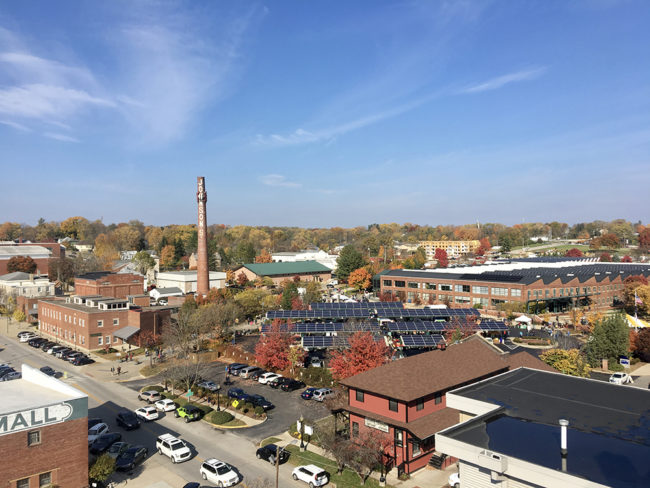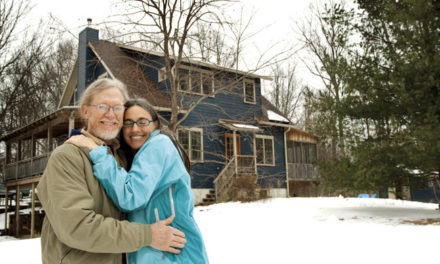
Editor’s note: The following is a press release from CanopyBloomington. Bloom has republished it here with edits for style and clarity.
CanopyBloomington, a new environmental social impact organization, is dedicated to growing and sustainably managing Bloomington’s urban forest.
The organization monitors the environmental, health, social, and economic benefits of having trees in urban areas, and aims to bring community engagement to the management of the city’s forest. Part of this goal entails tree equity, which involves planting trees in Bloomington’s lowest income neighborhoods so that the quality-of-life benefits provided by trees are available to all residents.
In order to accomplish these goals, CanopyBloomington is launching an initial crowdfunding campaign with the goal of raising $40,000. The campaign will be open until July 18.
CanopyBloomington was founded in winter 2020 over Zoom by Dr. Sarah Mincey and Sheryl Woodhouse.
Mincey is an urban forestry professor at the Indiana University School of Public and Environmental Affairs and director of the Environmental Resiliency Institute, whose research includes urban forest organizations and tree equity.
Woodhouse is a local entrepreneur who has started and grown several businesses, always with an eye on sustainability and social impact.
“Without dedication and active community engagement in planning and caring for our urban forest, the quality of life we enjoy in Bloomington will steadily decrease,” say the founders. “Most people understand that trees are critical in addressing climate change. They are less likely to realize the tangible mental and physical health benefits trees provide or that Bloomington’s urban forest produces real benefits equivalent to millions of dollars annually. Trees slow stormwater and prevent flooding, shade our homes and buildings to reduce heating and cooling costs, and even increase business in our stores.”
The organization’s work will be guided by the 2019 Bloomington Tree Canopy Report, which indicates that Bloomington’s tree canopy is decreasing due to tree mortality related to age, development, climate change, storms, diseases, and pests. It also maps the tree canopy from neighborhood to neighborhood, showing that more than 20% of potential plantable land in town still needs trees.
CanopyBloomington’s solution to the city’s decreasing canopy and to the issue of tree equity is to:
- Prioritize planting trees in Bloomington’s marginalized communities.
- Work with the City of Bloomington to plant and prune young trees. Trees need significant care, water, mulch, and pruning their first three years in the ground in order to reach maturity, when they play the biggest role in providing benefits.
- Develop a robust plan of volunteer and paid youth tree tenders as part of a larger professional development program to nurture our newly planted trees.
- Diversify the tree species in Bloomington, so that one pest or disease doesn’t wipe out a large portion of our urban forest.
Early in the formation process, Mincey and Woodhouse met with the City of Bloomington and the City’s urban forester, Erin Hatch. She confirmed the City’s interest in such an organization, especially in engaging residents in helping to manage the urban forest.
The new organization will focus not just on getting more trees in the ground, but also on teaching people how to care for the trees for the first three years after they are planted and beyond.
Properly caring for an urban forest often takes a three-pronged approach: 1) governmental agencies set policies and provide prioritized care of public trees based on resources available, 2) private individuals and companies care for trees on private land, and 3) a non-governmental organization helps educate communities members and provide additional support and resources for both the publicly- and privately-owned urban forest and helps connect public and private management.
While the City of Bloomington cares for and maintains the public trees in Bloomington’s Urban Forest, there are over 19,000 trees in their care, and extra hands can help push forward the City’s resilience and sustainability goals.
For more information, visit canopybloomington.org.










